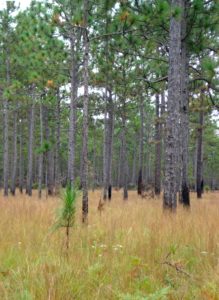Recent Research on the Restoration of Southern Pine Ecosystems
go.ncsu.edu/readext?674770
en Español / em Português
El inglés es el idioma de control de esta página. En la medida en que haya algún conflicto entre la traducción al inglés y la traducción, el inglés prevalece.
Al hacer clic en el enlace de traducción se activa un servicio de traducción gratuito para convertir la página al español. Al igual que con cualquier traducción por Internet, la conversión no es sensible al contexto y puede que no traduzca el texto en su significado original. NC State Extension no garantiza la exactitud del texto traducido. Por favor, tenga en cuenta que algunas aplicaciones y/o servicios pueden no funcionar como se espera cuando se traducen.
Português
Inglês é o idioma de controle desta página. Na medida que haja algum conflito entre o texto original em Inglês e a tradução, o Inglês prevalece.
Ao clicar no link de tradução, um serviço gratuito de tradução será ativado para converter a página para o Português. Como em qualquer tradução pela internet, a conversão não é sensivel ao contexto e pode não ocorrer a tradução para o significado orginal. O serviço de Extensão da Carolina do Norte (NC State Extension) não garante a exatidão do texto traduzido. Por favor, observe que algumas funções ou serviços podem não funcionar como esperado após a tradução.
English
English is the controlling language of this page. To the extent there is any conflict between the English text and the translation, English controls.
Clicking on the translation link activates a free translation service to convert the page to Spanish. As with any Internet translation, the conversion is not context-sensitive and may not translate the text to its original meaning. NC State Extension does not guarantee the accuracy of the translated text. Please note that some applications and/or services may not function as expected when translated.
Collapse ▲Over time we’ve seen southern pine ecosystems decline across the landscape. Currently, the USDA Forest Service has partnered with the Longleaf Alliance, the Shortleaf Pine Initiative and others to develop strategies to restore the native pines before they are gone for good.

Longleaf Pine, photo by USDA Forest Service
A few strategies that have been discussed include prescribed fire, planting, and partial cutting, and recent research suggests that these strategies are the key to bringing the pines back. Together, these groups are striving “to maintain, improve and restore longleaf and shortleaf pine ecosystems on national forests as well as state and private forestlands,” according to the US Forest Service.
The US Forest Service published an article detailing this work earlier this week, discussing the different strategies and their effectiveness. To learn more about these efforts and recent research, take a look at this article published by the US Forest Service, which can be found by clicking here.


